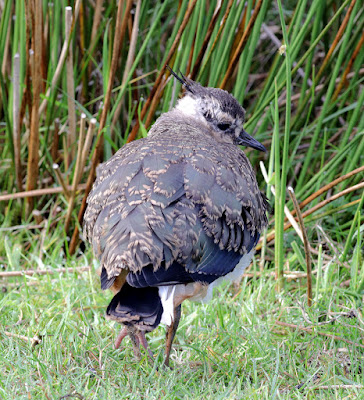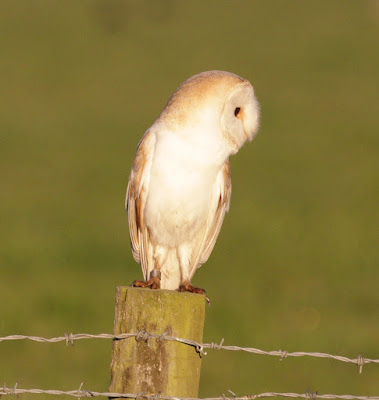At this time of year I enjoy a visit or two in the Bowland hills to see how things are and also to grab a few photos. The weather has been so poor with rain and cloud on most days that until now there was no point in that forty minute drive. Things were slightly better this morning but far from ideal with periods of cloud that blotted out the sun, but I managed a few pictures in the couple of hours without rain.
Bowland, Lancashire - Wiki Commons
On the wader front I saw the expected numbers of Oystercatcher, Lapwing, Snipe and Common Sandpiper but rather worryingly, not a single Redshank. Normally the species is very noticeable up here in the boggy uplands. The weather made me a week or so later than other years but I would still expect to see and hear Redshanks watching over their growing youngsters.
Oystercatcher
Oystercatcher
Snipe
Snipe
Because of the scale of its decline and range contraction in many areas of the UK in the period 1988-1991 and beyond, the Redshank now qualifies for amber listing. The decline is not just in upland areas, it is also because of increased grazing pressure on saltmarshes where the Redshank also breeds. The picture below was taken in Bowland almost to the day on 16 June 2017 on a traditional and unchanging stretch of habitat where all was silence today.
Redshank
There was a young Lapwing by the side of the road and it didn't look too healthy. There seemed to be something wrong as it walked with a limp and also held one leg up. I decided to catch it and perhaps examine what the problem might be. There was sheep wool around both legs with the wool joined one leg to the other like manacles.
Possibly the Lapwing had not been feeding too well as the wool had restricted its normal leg movements.
It proved impossible to unravel the wool as it was so tough and also wrapped very tightly around the bird’s legs.
Luckily I had my ringing box in the car for just such situations and where I keep a pair of scissors. Upon release the Lapwing flew off strongly and an hour or two later on the way back I saw it again, still limping but with an adult watching over its progress.
Lapwing
Lapwing
Lapwing
Lapwing
Up here in Bowland where waders breed amongst the sheep it’s not uncommon to see chicks or indeed adults with wool wrapped around a leg, sometimes both. Occasionally it leads to a bird losing part or all of a foot or lower leg when the tight wool may restrict the blood flow and cause the limb to rot and fall off.
The Oystercatcher below is also adorned with sheep wool; thankfully the bird appears unharmed.
Oystercatcher
A look at Marshaw found the usual flycatchers, Spotted and Pied, plus Grey and Pied Wagtail, Lesser Redpoll, Willow Warbler, Chiffchaff, Blackcap, Mistle Thrushes and two male Cuckoos; the latter seen in flight only.
I lost count of Meadow Pipits at 100 with now just the occasional songster and good numbers of youngsters lining the walls and fences.
Pied Wagtail
Meadow Pipit
I chanced upon a party of Red Grouse, two adults and ten+ young. They all scurried off into the marsh before I could get decent pictures.
Red Grouse
Red Grouse
Red Grouse chick
The Red Grouse, a subspecies of the Willow Grouse, is a bird of heather moorland with a range restricted to areas of blanket bog and upland shrub heath. The Red Grouse differs by not developing white plumage during winter and having a diet almost exclusively of heather.
Since the mid-1800s many areas of upland heather have been managed to produce grouse for shooting. Grouse shooting is one of the major land uses of upland ground and a source of income for many estates. That income, how it is derived, and the impact of shooting upon raptor species is the subject of considerable debate in the UK, but not all of it informed or dispassionate. Let’s not go there for now. Suffice to say that I saw no raptors today.
Heading Home
If the weather improves, as it is promised to do yet again, there may be another visit to Bowland in the offing. Stay tuned.
Linking today with https://paying-ready-attention-gallery.blogspot.com.





































































.jpg)


















